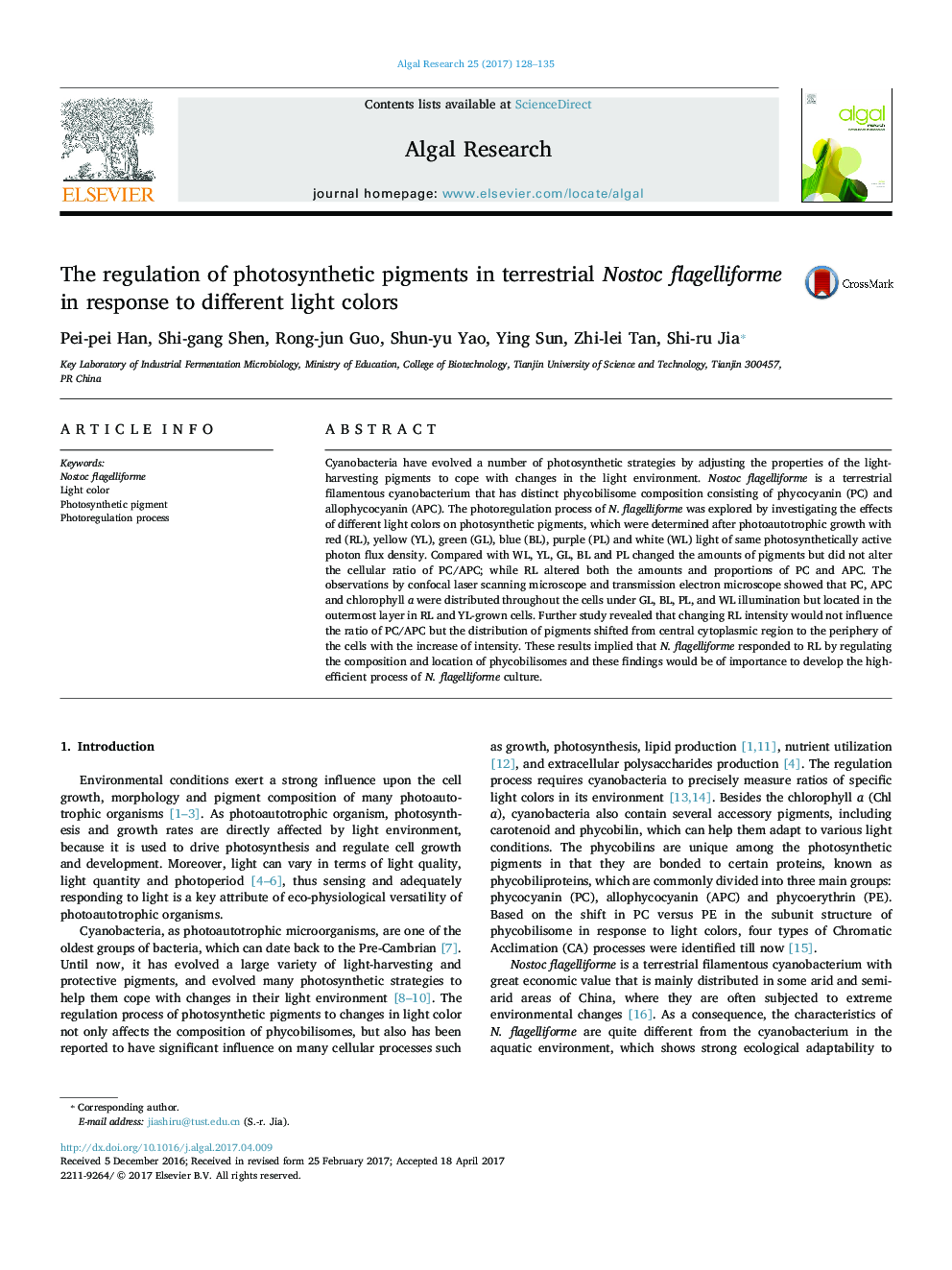| Article ID | Journal | Published Year | Pages | File Type |
|---|---|---|---|---|
| 5478386 | Algal Research | 2017 | 8 Pages |
Abstract
Cyanobacteria have evolved a number of photosynthetic strategies by adjusting the properties of the light-harvesting pigments to cope with changes in the light environment. Nostoc flagelliforme is a terrestrial filamentous cyanobacterium that has distinct phycobilisome composition consisting of phycocyanin (PC) and allophycocyanin (APC). The photoregulation process of N. flagelliforme was explored by investigating the effects of different light colors on photosynthetic pigments, which were determined after photoautotrophic growth with red (RL), yellow (YL), green (GL), blue (BL), purple (PL) and white (WL) light of same photosynthetically active photon flux density. Compared with WL, YL, GL, BL and PL changed the amounts of pigments but did not alter the cellular ratio of PC/APC; while RL altered both the amounts and proportions of PC and APC. The observations by confocal laser scanning microscope and transmission electron microscope showed that PC, APC and chlorophyll a were distributed throughout the cells under GL, BL, PL, and WL illumination but located in the outermost layer in RL and YL-grown cells. Further study revealed that changing RL intensity would not influence the ratio of PC/APC but the distribution of pigments shifted from central cytoplasmic region to the periphery of the cells with the increase of intensity. These results implied that N. flagelliforme responded to RL by regulating the composition and location of phycobilisomes and these findings would be of importance to develop the high-efficient process of N. flagelliforme culture.
Related Topics
Physical Sciences and Engineering
Energy
Renewable Energy, Sustainability and the Environment
Authors
Pei-pei Han, Shi-gang Shen, Rong-jun Guo, Shun-yu Yao, Ying Sun, Zhi-lei Tan, Shi-ru Jia,
